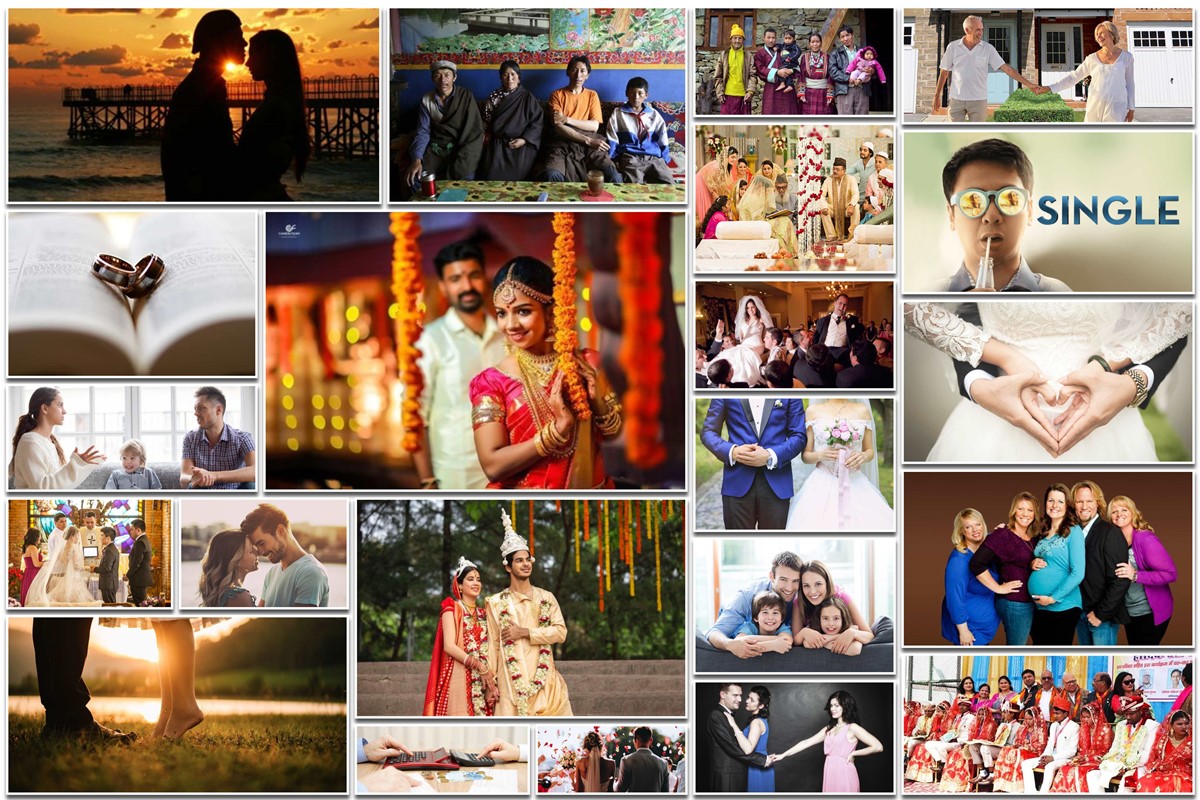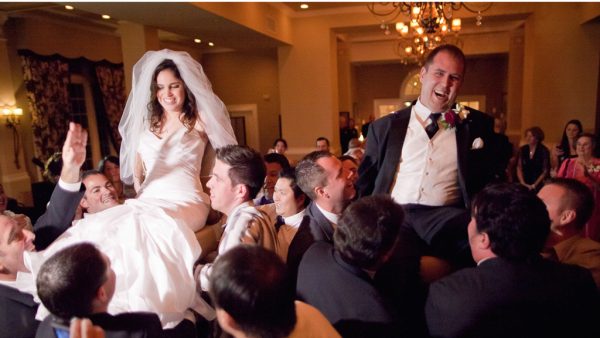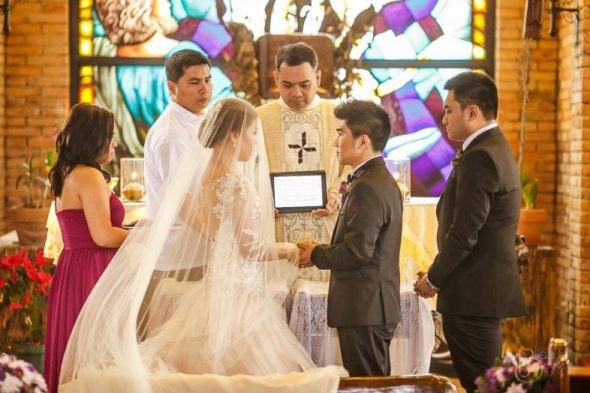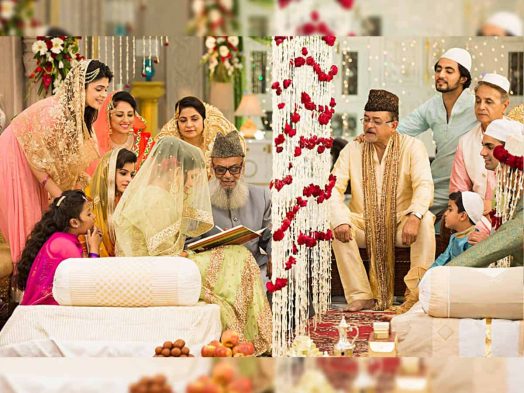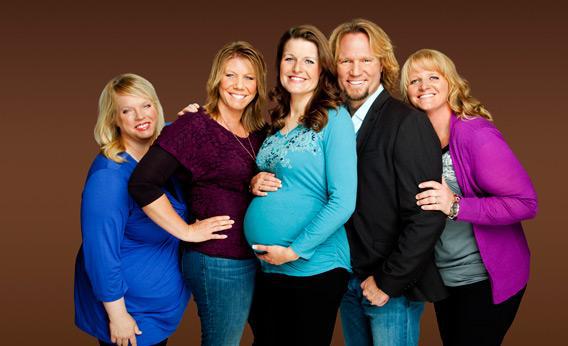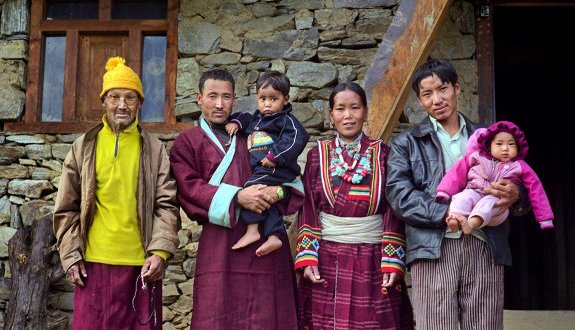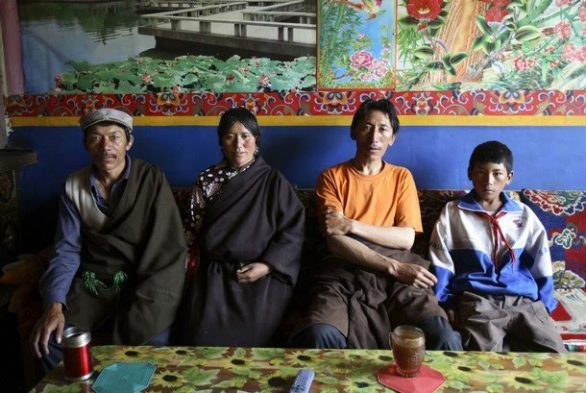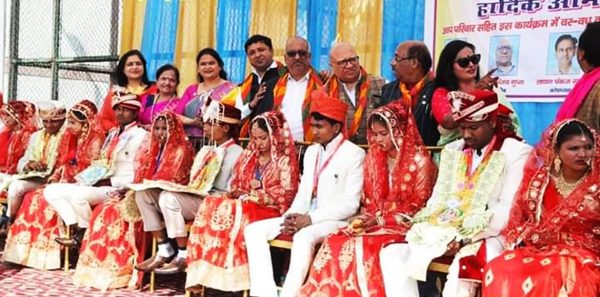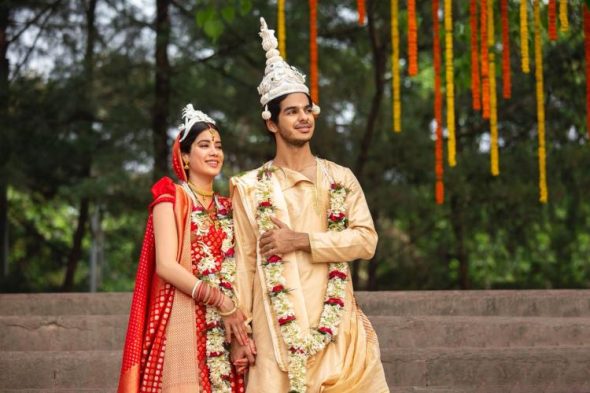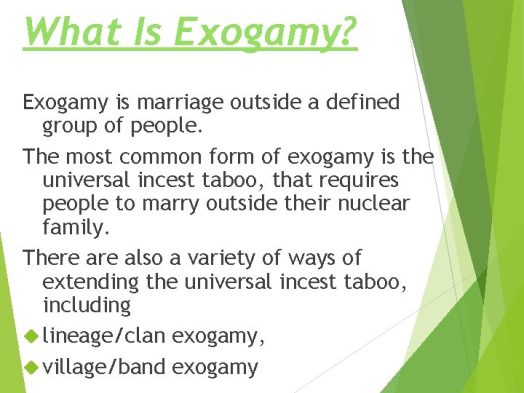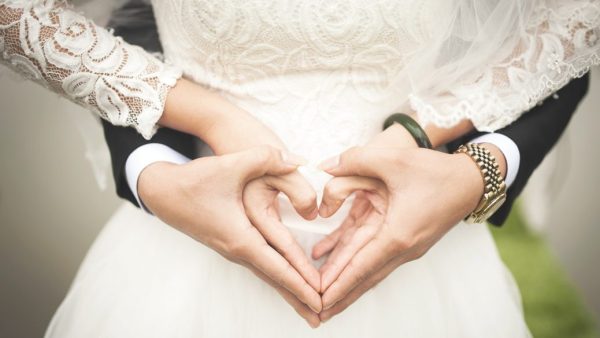Marriage is one of the universal social structures that human civilization has developed and nurtured. It is inextricably linked to the institution of the family. “Marriage is a socially acceptable means of forming a family of reproduction,” according to Gillin & Gillin. According to Westermarck, marriage is anchored in the family rather than the marriage in the family. Marriage is a social institution having various purposes, functions, and forms in many civilizations, yet it exists worldwide as an institution. “Marriage is a contract for the creation and upkeep of children,” says Malinowski.
Marriage and family are two sides of the same social reality, which is man’s bio psychic and social impulses. Marriage is one of the oldest, most significant, universal, and necessary social institutions that has existed since the dawn of civilization. Marriage as an institution is intended to meet an individual’s biological requirements, particularly his or her sexual wants, in a legal, customary, culturally defined, and socially acceptable manner. The law of unilateral descent Non-uniform non-cognitive
It also allows men and women to participate in family life and establishes some rights and responsibilities for children born from their union. It connects two opposing sexes and allows them to live as husband and wife as a secure social institution. It also gives them social legitimacy to engage in sexual activity and produce children. Marriage is the formalized form of sex interaction.
It is strongly linked to the institution of family and the relationship of women to their families. However, the term “marriage” or “vivaha” is a mixture of two terms, “Vi” and “Vaha,” which refers to the ritual of bringing the bride to the bridegroom’s home. In some cultures, it is seen as a religious sacrament, whereas in others, it is regarded as a social compact.
Marriage exists in all civilizations and at all stages of development as a universal social institution. The many types or forms of marriage differ from one civilization to the next. Distinct communities, cultures, and cultural groupings have different types or forms of marriage based on their customs, practices, and philosophical systems. Marriage is a religious sacrament in certain civilizations and a social contract in others.
There are, however, numerous sorts of marriages, each of which is classed differently. Have you ever wondered what kind of marriage you’re in? When you ask couples about their marriage style, they will most likely reply either conventional or companionate. There are, however, a variety of alternative marital styles, including those that your parents and grandparents may have experienced.
On the subject, two thinkers have a lot to say. Judith Wallerstein, a psychologist, offers four unique marriage theories that focus on how spouses interact in their relationship. E. Mathis Hetherington, a researcher, and Ph.D., gives four additional distinct viewpoints on different sorts of marriages. If you ask someone to define “love,” you’ll receive a variety of responses. Sure, you’d probably get a consensus or a lot of close responses, but everyone would have their own opinion on what makes love, love.
It’s no surprise, therefore, that there is no one-size-fits-all solution to what makes a marriage work. There are, however, tried-and-true recommended practices. The key to a successful marriage is choosing what you want your marriage to be about and agreeing on it with your prospective partner.
According to psychological studies, there are seven different types of marriages. Is your relationship in good shape? Your response will most likely rely on whether you and your partner(s) agree on the personality type you are most suited to.
The primary legal role of marriage is to protect the couples’ rights to each other, as well as to protect and define the rights and connections of children within society. Marriage has traditionally bestowed a valid status on the offspring, entitling him or her to a variety of rights dictated by the community’s customs, including the ability to inherit. Marriage established the allowable social interactions for the offspring in most civilizations, including the acceptable selection of future partners.
Marriages are generally arranged by the family in civilizations where the big, or extended, the family remains the primary unit. The idea is that love between the spouses develops after marriage, and considerable consideration is given to the socio-economic benefits that the marriage will bring to the broader family.
Young people in countries where the tiny, or nuclear, family is the norm generally pick their own partners. Love is considered to come before (and decide) marriage, and the socioeconomic factors of the relationship are usually overlooked.
Religious ideas and practices prevalent in civilizations all across the world have influenced these traditions to some extent. Weddings, for example, are very complex ceremonies in the Hindu faith, comprising numerous specified rites.
Marriages are usually planned by the couple’s parents, and the ceremony’s date is decided by meticulous astrological calculations. Even though the Buddha provided instructions for lay householders’ obligations, most Buddhists consider marriage to be largely a secular matter.
Judaism Marriage
Marriage is defined as making an individual whole in Judaism, and it is considered to have been ordained by God. The official betrothal and wedding rites are both parts of the marriage ceremony (prior to the 12th century, the two were separated by as much as one year). The groom signs the marriage contract in front of a number of witnesses in the modern ceremony. After that, he is taken to the bride’s room, where he drapes a veil over her.
The reading of the marriage contract, the seven marriage benedictions, the groom placing a ring on the bride’s finger (in Conservative and Reform traditions, the double-ring ceremony has been introduced), and, in most communities, the crushing of glass underfoot are all followed by the ceremony under the huppa (a canopy that symbolizes the bridal bower). Following the ceremony, the couple is brought into a separate chamber for solitude, symbolizing the marriage’s completion.
Christian Marriage
Christianity has stressed the spiritual essence and indissolubility of marriage since its inception. Marriage was founded by God, according to Jesus Christ, and most Christians regard it as a permanent partnership based on mutual consent.
Marriage is considered a sacrament by certain Christian denominations; nevertheless, other Christians recognize the sacredness of marriage but do not consider it a sacrament. Christian weddings have taken place before a priest or minister since the Middle Ages, and the ritual includes the exchanging of vows, Scripture readings, a blessing, and, in certain cases, the eucharistic rite.
Islam Marriage
Marriage is not exactly a sacrament in Islam, but it is always viewed as a gift from God or a form of worship. The Qurn lays out the core Islamic beliefs of marriage, which declare that the marital connection is based on “mutual love and kindness” and that couples are “each other’s clothes.” Muslim males are allowed to have up to four wives at a time (though this is uncommon), but each wife must be treated equally.
Marriages are typically arranged between the bride’s parent or guardian and her chosen husband, who must provide his wife with the mahr, money given as a gift to ensure her financial independence.
Different Types of Marriage and Meaning
Marriage exists in all civilizations and at all stages of development as a universal social institution. The many types or forms of marriage differ from one civilization to the next. Distinct communities, cultures, and cultural groupings have different types or forms of marriage based on their customs, practices, and philosophical systems. Marriage is a religious sacrament in certain civilizations and a social contract in others. There are, however, numerous sorts of marriages, each of which is classed differently.
There are many types of marriage, but some of the most common are monogamous, polygamous or polyamorous, consanguineous or incestuous, and same-sex marriage. Here is the latest list of all types of marriage, characteristics, and its meaning that you should know about. Read this extremely detailed list.
1. Monogamy
Monogamy is a popular, reasonable, and desirable kind of marriage. It can be found in any civilized society. Monogamy is defined as a marriage between just one man and one woman at a time. In nature, this sort of marriage is generally unbreakable. It will go on till death. Monogamy, defined as one husband and one woman, is now practiced and emphasized all throughout the world. Serial Monogamy and non-serial Monogamy are two forms of monogamy.
2. Serial Monogamy
In a serial monogamous marriage, remarriage is possible in the event of divorce or death. Despite his remarriage, he maintains his monogamy.
3. Non-Serial Monogamy
In case of non-serial monogamy does not arise in non-serial monogamy since none of the partners wants to remarry. In this case, a spouse has the same single partner for the rest of his life. Monogamy, on the other hand, is the optimum or optimal type of marriage because of the following benefits:
- It is appropriate for all levels of society and people.
- It improves both husband and wife’s sex enjoyment.
- It encourages greater communication between the spouses.
- It reduces family envy, hate, and quarrels.
- It promotes gender equality and gives men and women equal standing.
- It ensures a stable sex life as well as a solid family life.
- Parents provide adequate care for their children.
- It makes inheritance and succession rule simple.
Monogamy is regarded as the finest type of marriage and is practiced all over the world due to the benefits listed above. Monogamy’s main drawback is divorce, which occurs as a result of monogamous boredom.
4. Polygamy
Polygamy is a marriage in which a guy has many wives at the same time. In this form of marriage, each wife has her own home, and the husband alternates between them. In ancient Indian civilization, it was the favored method of marriage. However, the bulk of the populace did not practice it.
However, it is currently only present among a few tribal groups, including the Naga, Gond, and Baiga. Polygamy was primarily caused by economic and political factors. Polygamy is caused by a number of factors, including a man’s need for variety, forced celibacy, women’s barrenness, and an increase in the female population. Polygamy may be classified into two types: sororal polygyny and non-sororal polygyny.
5. Sororal Polygyny
Surrogate polygamy or Sororal polygyny is a term used to describe as surrogate. Surrogacy is derived from the Latin word “sorer,” which meaning “sister.” As a result, it refers to a marital tradition in which a man marries his wife’s sisters during or after her death.
6. Non-Sororal Polygamy
Non-sororal polygamy is the polar opposite of sororal polygamy and occurs when a man marries many women at the same time who are not necessarily sisters.
7. Polyandry
Polyandry is a relatively uncommon kind of marriage nowadays. A lady marries multiple guys at the same time in this form of marriage. “Polyandry is a kind of union in which a woman has more than one husband at a time or in which brothers have a wife or wives in common,” writes K.M. Kapadia. It is now found among several tribes such as the toda, khasi, and nayars. Fraternal polyandry and non-fraternal polyandry are the two forms of polyandry.
8. Fraternal Polyandry
Fraternal polyandry occurs when multiple brothers share the same bride. The marriage of Draupadi and Pandabs is an excellent example of fraternal polyandry. Some ceremonies are linked with the father’s resolve. Some tribals, such as the Toda and Khasi, still practice this form of marriage today.
9. Non-Fraternal Polyandry
It is diametrically opposed to fraternal polyandry. The spouses of a lady in this form of marriage are not always brothers. The Nayars of Kerala practice this kind of marriage, in which the wife spends time with each of her husbands. The others have no rights to a lady who lives with one of her husbands. This is primarily due to a lack of females.
10. Endogamy or Group Marriage
Endogamy, often known as a group marriage, is a type of endogamy. A group of guys marries a group of ladies at the same time in this form of marriage. Every woman belongs to one of the groups and is married to one of the men. Dr. Rivers, a sociologist, describes it as a form of sexual communism. Some tribes in New Guinea and Africa use this form of marriage.
On the basis of mate selection rules or on the basis of mate selection rules:
On the basis of mate selection or mate selection norms, marriages can be classified as endogamous or exogamous. Caste, sub-caste, varna, and tribal endogamy are the four sub kinds of endogamy. Exogamous marriage can also be classified into four types: Gotra, Pravar, Sapinda, and village exogamy.
11. Endogamy or Endogamous Marriage
Endogamy, also known as endogamous marriage, is the practice of marrying within one’s own caste, sub-caste, varna, or tribe. In other words, caste endogamy, sub-caste endogamy, varna endogamy, and tribal endogamy are all examples of endogamous marriage.
(a) Caste Endogamy
Caste endogamy is a form of endogamy in which a couple marries within their own caste. Endogamy is severely enforced in a caste-based society. Each caste group’s members marry inside their own caste group.
(b) Sub-Caste Endogamy
It is a different sort of endogamous relationship. Each caste in a caste-based system is split into several sub-castes. Each sub-caste, like caste, is an endogamous entity. Marriage takes happen solely inside one’s sub-caste under sub-caste endogamy.
(c) Varna Endogamy
Another form of endogamous marriage is Varna endogamy. We discovered the presence of four varnas in old Indian society: Brahmin, Kshatriya, Vaisya, and Sudra. The choice of mate in varna endogamy is limited to one’s own varna.
(d) Tribal Endogamy
A tribe is a territorial organization. Tribal endogamy is a form of endogamous marriage in which one’s partner selection is limited to members of the same tribal tribe. Tribe, like caste, is an endogamous entity.
12. Exogamy (Also Known as Exogamous Marriage)
It is the polar opposite of endogamy, or endogamous marriage. It refers to a marriage system in which a person must marry outside of their own group, such as a gotra, pravara, sapinda, or hamlet. This is an excellent marital method that results in the birth of healthy, intellectual offspring. There are several types of exogamy, including:
(a) Gotra Exogamy
The word “gotra” means “clan.” Members of a given gotra or clan are said to be closely related through blood. As a result of gotra exogamy, one must marry outside of one’s own gotra.
(b) Pravara Exogamy
Pravara is a Sanskrit word that meaning “siblings.” People who descend from a common saint are considered to be members of a certain Pravara. Pravara exogamy states that one must marry outside of one’s own pravara. Marriage is prohibited within the pravara.
(c) Sapinda Exogamy
Sapinda is a word that meaning “lineage.” Sapindas are people who have five generations on their father’s side and three or seven enerations on their mother’s side. They were thought to come from a certain pinda. As a result, exogamy inside one’s own sapinda is banned according to sapinda. They are not permitted to marry outside of their sapnida. According to this concept, marriage inside one’s own village is prohibited, and every community has its own set of marital regulations. Marriage between kins is restricted in certain civilizations, whereas marriage between a small number of kins is permitted in others.
(d) Village Exogamy
As a result, marriage is sanctioned in those civilizations based on choice or priority. As a result, preferred marriage refers to a socially sanctioned marriage between relatives. In other words, marriage can be classified into four types based on preference: cross-cousin marriage, parallel cousin marriage, levirate marriage, and surrogate marriage.
13. Cross-Cousin Marriage
Cross cousin marriage occurs when a daughter or son of one’s mother’s brother marries a son or daughter of one’s father’s sister. This cross-cousin form of marriage may be seen in Abhimanyu’s marriage to Sashikala. This form of marriage is said to be practiced in Orissa, Rajasthan, and Maharashtra, among other places. This sort of marriage takes place in order to avoid paying a large bride price and to keep one’s family property.
(a) Parallel Cousin Marriage
Parallel cousin marriage is defined as a marriage between the children of two sisters or two brothers. This is a common kind of marriage among Muslims.
(b) Levirate
‘Devar Vivaha’ is another name for it. Levirate occurs when a lady marries her husband’s brother after her husband’s death. Some tribes, such as the Gond, the Munda, or the Santal, the Oran, and the Toda, practice this form of marriage.
(c) Sororate
‘Sali Vivah’ is another name for it. Sororate marriage occurs when a man marries his wife’s sister after her death or even while she is still alive. Some tribes, such as the Kharia and the Gond, practice this kind of marriage.
(d) Anuloma Or Pratiloma
Sociologist have classified marriage into Anuloma or Pratiloma
(e) Anuloma Marriage Or Hypergamy
Anuloma or Hypergamy marriage occurs when a man of a higher caste or varna marries a lady of a lower caste or varna. Hypergamy is called as Anuloma in traditional Indian civilization. This was formerly common practice among nobility. It was discovered in Bengal as Kulinism. Anuloma, or hypergamy marriage, is the polar opposite of Pratiloma, or hypogamy marriage.
(f) Pratiloma Marriage Or Hypogamy
Pratiloma, or hypogamy marriage, occurs when a man of lower caste or position marries a woman of higher caste or status. This isn’t a legal way to tie the knot. Pratiloma or hypogamy marriage is a term used in Hindu law when a man from a lower caste or position marries a woman from a higher caste or status. This isn’t a legal way to tie the knot. Pratiloma is still practiced among the people, according to ancient Hindu lawgiver Manu.
14. Devitalized Marriage
Approximately 40% of couples. There is widespread dissatisfaction in all aspects of relationships, as well as substantial volatility. Divorce has been discussed by both parties. They are always critiquing each other’s personalities. Their union is purely utilitarian. They are often younger, have been married for a shorter period of time, and have a lesser income than other couples.
Many are members of the minority group. They’re more likely to come from divorced families, and they’re more likely to have been divorced themselves. They stick together since they don’t have any other options.
15. Financial Marriage
These couples are having disagreements and are dissatisfied with their communication and conflict resolution methods. They are unsatisfied with their partner’s personal qualities, and there may be personal assaults. Their jobs come first, and money or financial incentives are what keep them together. Financial management is their lone relationship strength. In such utilitarian partnerships, a large proportion of husbands and wives have pondered divorce.
16. Conflicted Marriage
They are unhappy in many aspects of their relationship, including personality conflicts, communication, conflict resolution, and sexuality, and they may avoid or fail to resolve difficulties between them. Instead, they concentrate on and get pleasure from external events like as leisure, children, and religious life. However, a sizable proportion of both couples have pondered divorce.
17. Traditional Marriage
Many aspects of their relationship are fairly satisfying, but their sexual relationship and communication style are distressing. They are less judgmental of each other’s personalities than Types 1, 2, and 3. Their strength comes from a fulfilling religious life as well as positive interactions with extended family and friends. The marriages are at a good place. These couples are often older, have been married for a longer period of time, are white, and Protestant.
18. Balanced Marriage
Most aspects of their relationships are somewhat pleased, with real strengths in communication and problem-solving. The most serious issue is money management. On topics like leisure, childrearing, and sexuality, they agree more than the typical person. The nuclear family is highly valued by them. Despite this, more than a quarter of people have pondered divorce.
19. Harmonious Marriage
8 percent of the time is spent in harmony. They are quite content with each other, their displays of affection, and their sexual lives. They, on the other hand, are self-centered, seeing children as a burden and parenting as a cause of anxiety. It’s possible that when an issue arises in this household, it manifests in the child.
20. Vitalized Marriage
They are happy in nearly every aspect of their relationship, and they get along well. They are well-connected on a personal level, have significant internal resources, and agree on the majority of external issues. They face challenges, but they successfully overcome them.
They are wealthier than the majority of the population, and they are more likely to be older, married longer, white, and Protestant. They are usually in their first marriages and have intact families.
The study revealed a few surprises. Even the most well-adjusted couples face marital difficulties; approximately one-quarter of Type 7 spouses had pondered divorce at some point. In fact, in all seven marital types, wives were less satisfied than husbands.
Contact us at the Montreal Therapy Centre for online or in-person couples counselling, family therapy, or individual psychotherapy if you are dissatisfied with your relationship and would like to strengthen it or discuss your individual concerns with the help of a couples therapist who understands the psychology and dynamics of successful relationships.
21. Starter Marriage
Couples desire to test marriage for a set period of time without having children. They make legal agreements. They must decide whether to divorce, renew their marriage, or move on to a different type of marriage before the time limit expires.
22. Companionship Marriage
This is another another marriage in which there are no children. Friendship, having someone to interact with, and doing other things together are all reasons why couples married. It’s not about love or desire.
23. Parenting Marriage
The children are at the center of this marital model. A romantic relationship isn’t required as part of the package. Two couple agree to raise their children together and provide them with a wonderful environment. They agree to remain together only until all of their children are self-sufficient. Of course, they can always decide to be together after that, but the expectation that they would be together forever is not part of their marriage contract from the beginning.
24. Safety Marriage
Some people marry for financial gain. Others marry for health insurance or financial stability while pursuing their interests or obtaining an education, or for any other purpose. Don’t be too harsh! If each spouse benefits from the arrangement and each spouse openly agrees to it from the start, it is not gold-digging or exploitation.
25. Living Alone Together Marriage
This marriage is for those who mean it when they say they need their space. Each couple has his or her own space. They are dedicated to the partnership, but they also desire some independence.
26. Open Marriage
Other partners exist for spouses, but they are not sneaking about. “Consensual non-monogamy” is what they’re doing. They desire a solid relationship, but not one that is monogamous. They’ve consented to it since it’s “consensual.”
27. Covenant Marriage
Covenant marriage ups the ante, whereas all other variants of “the new ‘I do’” remove the limitations or assumptions of the current paradigm of marriage. It is solely for one-man, one-woman unions. Marriages are more difficult to enter (premarital counseling is required) and more difficult to leave (there are few legitimate grounds for divorce, and couples who do not meet those criteria but still want to divorce have to wait two years to do so). Louisiana, Arizona, and Arkansas are the only states that allow covenant marriages.
The Awesome Alternative?
If you enjoy being single and feel it is the ideal life for you, even if you have met someone wonderful, or just don’t want to be married right now, there is an incredible option to all of those sorts of marriage – single life! Live it totally, happily, and without remorse!
You should be aware that amid the book’s many insightful points, there were a few that were not accurate. Despite popular belief, empirical evidence does not support the notion that marriage makes individuals happier or healthier.
Being married also comes with the benefit of not being alone. In reality, unmarried individuals are more linked to other people on average than married people, and married people tend to become more insular than they were when they were single.
